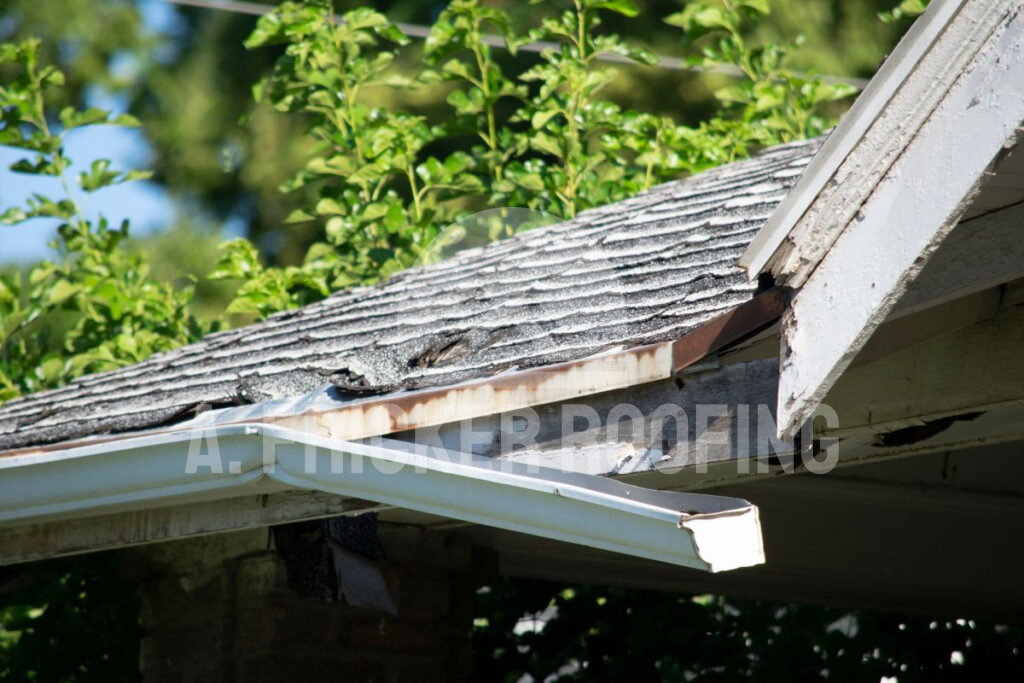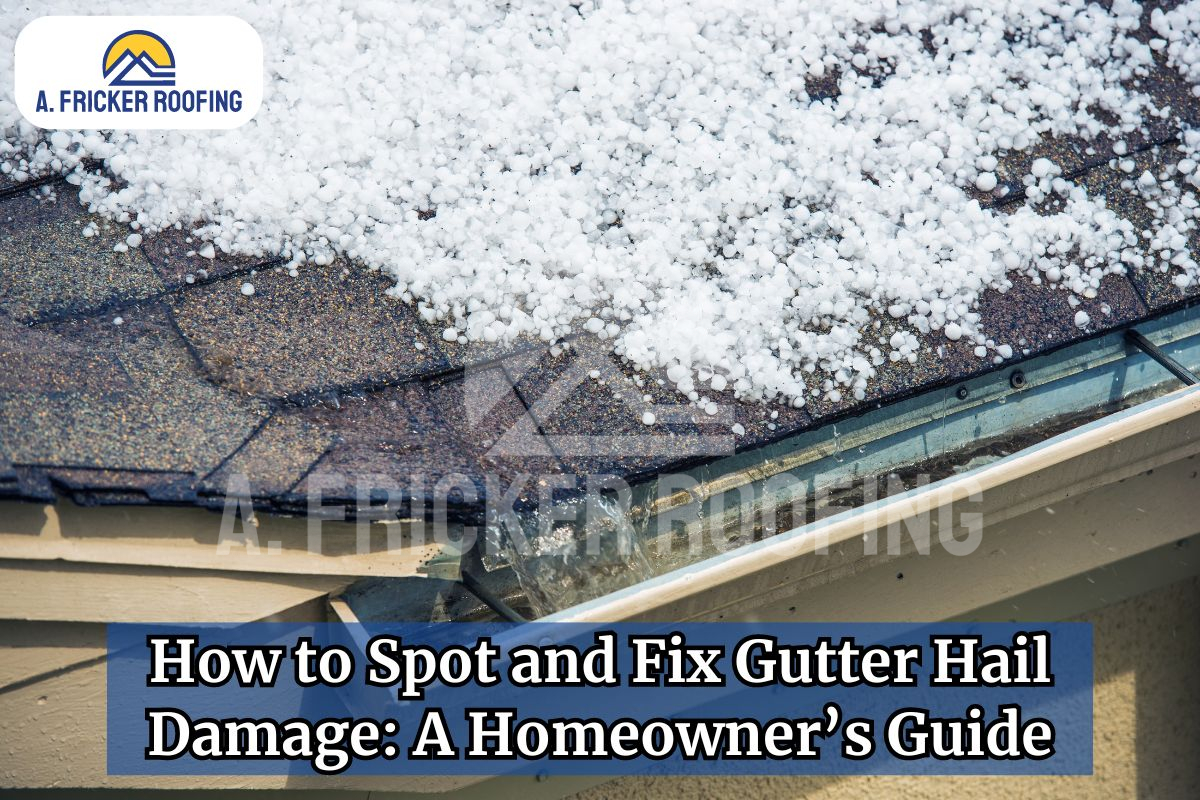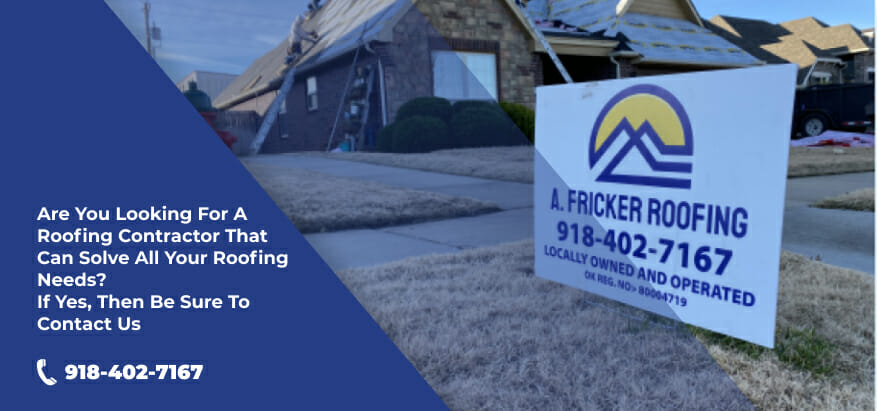Gutter hail damage isn’t new to Oklahoma, in fact, most of the gutters we repair are cracked or dented, which are the most apparent signs that hail damage has occurred. If your gutters have similar damage, there is no need to worry as long as you take immediate action. However, neglecting gutter hail damage can increase the chance of further problems developing, including water overflows, pooling, and cracked, split, and sagging gutters.
In order to ensure you’re able to successfully detect and repair your gutter damage, this blog post lists the most common signs we observe as gutter hail damage and provides you with ways to repair them.
Understanding Gutter Hail Damage
If you are anxious about hail damage affecting your gutters or your roof, it is important to understand what hail damage is, and what it isn’t. Sometimes, homeowners misinterpret other forms of damage as hail damage. For example, many homeowners might think scratches on gutters are caused by hail, but this is not the case since hail never causes scratches on gutter materials. They also don’t create creases on the metal or materials they strike. Moreover, indentations in gutters may not always be caused by hail, as debris or other elements can also be the reason behind them.
The other question that concerns homeowners is the difference between cosmetic damage and structural damage. Since cosmetic damage doesn’t affect gutter function, immediate repairs or changes may not be necessary. However, structural damage caused by large hailstones needs immediate attention and repairs.
What Hail Damage Looks Like
The severity of the hail damage may differ significantly between different types of gutters, depending on the material it’s made out of. For instance, hail damage to vinyl and aluminum gutters may be easier to spot since these materials weigh less. On the other hand, more durable materials such as copper and steel may only show slight changes. Another major factor that can determine the extent of damage that occurs is the size of the hail.
1. Dents And Dings
Hail damage is easily identified as dents and dings along the gutter channel. While minor dents tend to be a cosmetic concern, larger or more numerous dents can affect the functionality of your gutters. Sizeable hailstones can even alter their shape and disrupt water flow. Moreover, these dents can lead to more significant issues over time if not addressed.
2. Cracks and Splits
Cracks and splits along your gutters indicate a severe form of hail damage. These are usually the result of larger hailstones striking with enough force to break through the gutter material. Cracks and splits can compromise the entire gutter system, leading to leaks, ineffective water drainage, and pooling around the foundation. To resolve these issues, Immediate repair or a replacement is essential.
3. Dislodged or Bent Gutters

Large hailstones may strike your gutters with a force that’s great enough to dislodge or bend them. Sometimes, even the accumulation of hailstones within your gutters can weigh the gutter channels down, causing them to pull away from the fascia board. Dislodged or bent gutters can temporarily disrupt water flow, potentially causing water to overflow the gutters and damage the home’s exterior and foundation.
4. Punctures or Holes

Punctures or holes in the gutters are critical signs of hail damage. Sharp or very large hailstones can pierce the gutter material, creating holes that lead to water leaks. This type of damage is particularly severe, as it can cause extensive water damage to your home’s foundation, walls, and landscape if it’s not promptly repaired.
What Isn’t Considered Gutter Hail Damage?
It’s important to know the things that aren’t considered hail damage so that you can make an accurate assessment of your roof and get the right type of repairs.
1. Normal Wear and Tear
Normal wear and tear on gutters includes faded colors, minor scratches, and general signs of aging. These issues arise from regular use, weather exposure, and the passage of time. Unlike hail damage, normal wear and tear do not indicate sudden or severe damage, but rather the natural degradation of materials over the years.
2. Blockages and Overflow
Typically, any hail that’s accumulated in the gutters will melt after the passing of the storm, so it may not be the direct reason for blockages or overflows. Debris, leaves, and twigs, on the other hand, are what typically cause overflows and blockages.
3. Creasing
Creasing might seem like a significant issue, but it is not typically considered a sign of gutter hail damage. Creasing usually occurs due to improper installation or aging materials rather than hail impact.
4. Scratches
Scratches can result from various sources, such as branches and ladders, or even develop during installation. While unsightly, scratches generally do not affect the performance of your gutters.
How To Repair Gutter Hail Damage
You might be wondering if you can fix gutter hail damage yourself, but that depends on the extent of the damage and your comfort level with home repairs. We have categorized gutter hail damage into three sections depending on the extent. Here’s a breakdown.
1. Minor Repairs
If you’re dealing with small dents or minor clogs, you can likely handle these repairs yourself. Use a rubber mallet to gently tap out dents and a garden hose to clear out any debris from your downspouts.
2. Moderate Damage
For moderate damage, like small cracks or minor sagging, you might need a bit more expertise. Seal small cracks with a waterproof gutter sealant and reinforce sagging sections with new gutter connectors or brackets.
3. Major Damage
If your gutters have large cracks, significant sagging, or are pulling away from your home, it’s time to call in a professional. Major repairs require specialized tools and expertise to ensure the job is done right and prevent further damage.
Or, if you notice more severe damage to your gutters, such as the gutters pulling away, sagging, and splitting, you can consider replacing them.
Also read: Does Homeowners Insurance Cover Gutter Damage?
Consider Galvalume Steel Gutters
If you live in an area prone to hail storms, many people recommend investing in copper gutters. Copper gutters offer excellent hail resistance and longevity, but they can also be expensive, making them unaffordable for many homeowners.
Because of the cost, many homeowners opt for aluminum gutters, which are versatile. However, aluminum gutters may not be as durable against hail and storms. So, which gutter material is the best choice? Galvalume steel!
Galvalume steel is a steel alloy coated with zinc or aluminum, providing exceptional durability against hail and other elements. It is also more affordable than copper and zinc gutters, making it a confident choice for homeowners.
Contact The Skilled Professionals In Tulsa, OK, For Your Gutter Repair or Replacement
If you’ve experienced a hailstorm and suspect your gutters are damaged, don’t wait until it’s too late. Contact us at (918) 402-7067 A. Fricker Roofing & Waterproofing in Tulsa, OK, for a thorough roof inspection and professional repair services. Protect your home from further damage and ensure your gutters are in top condition today!

